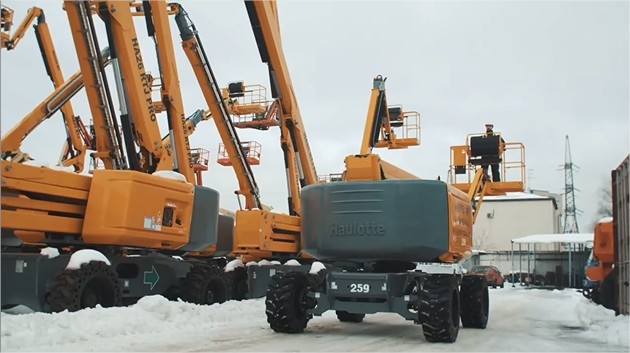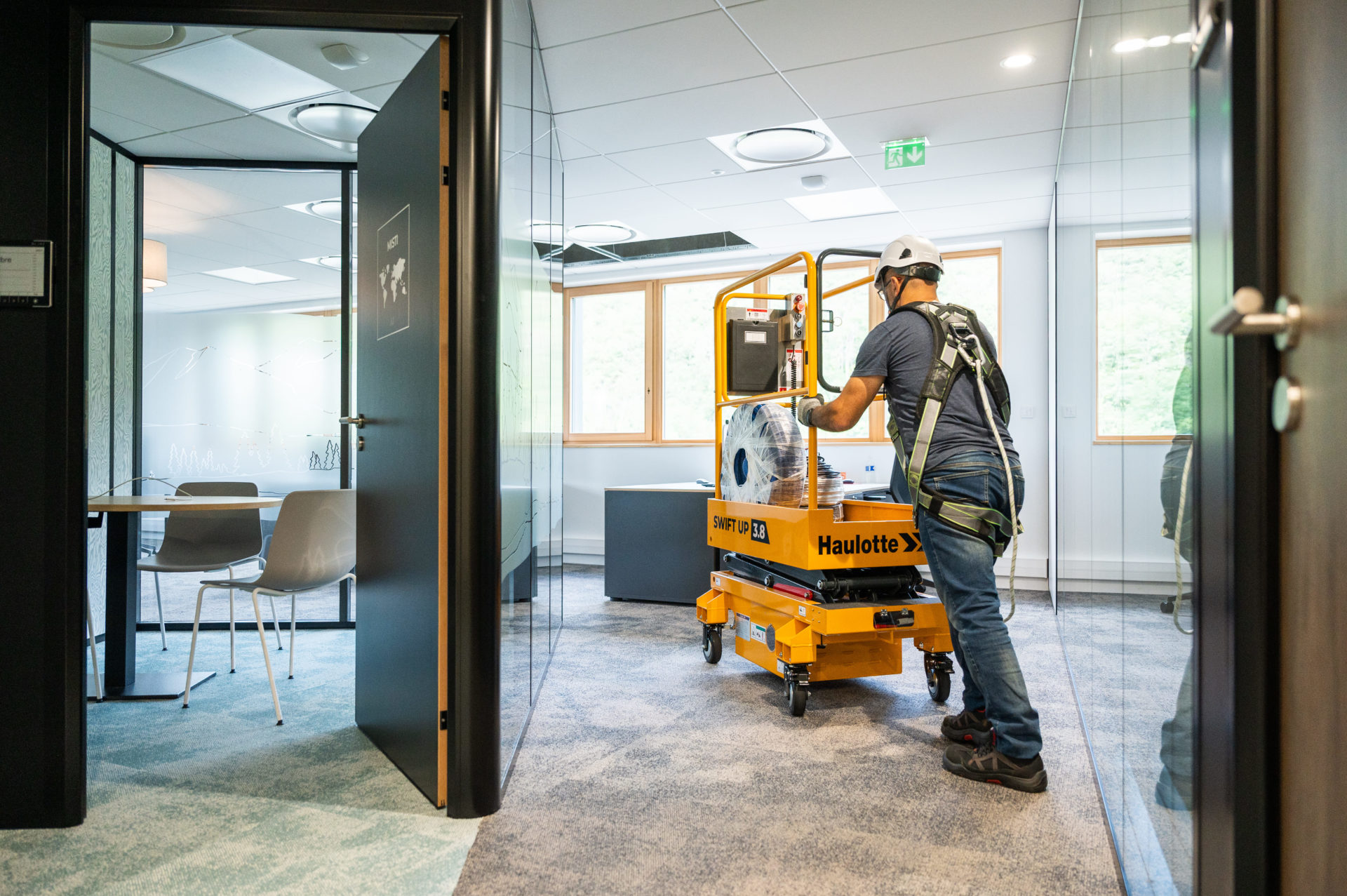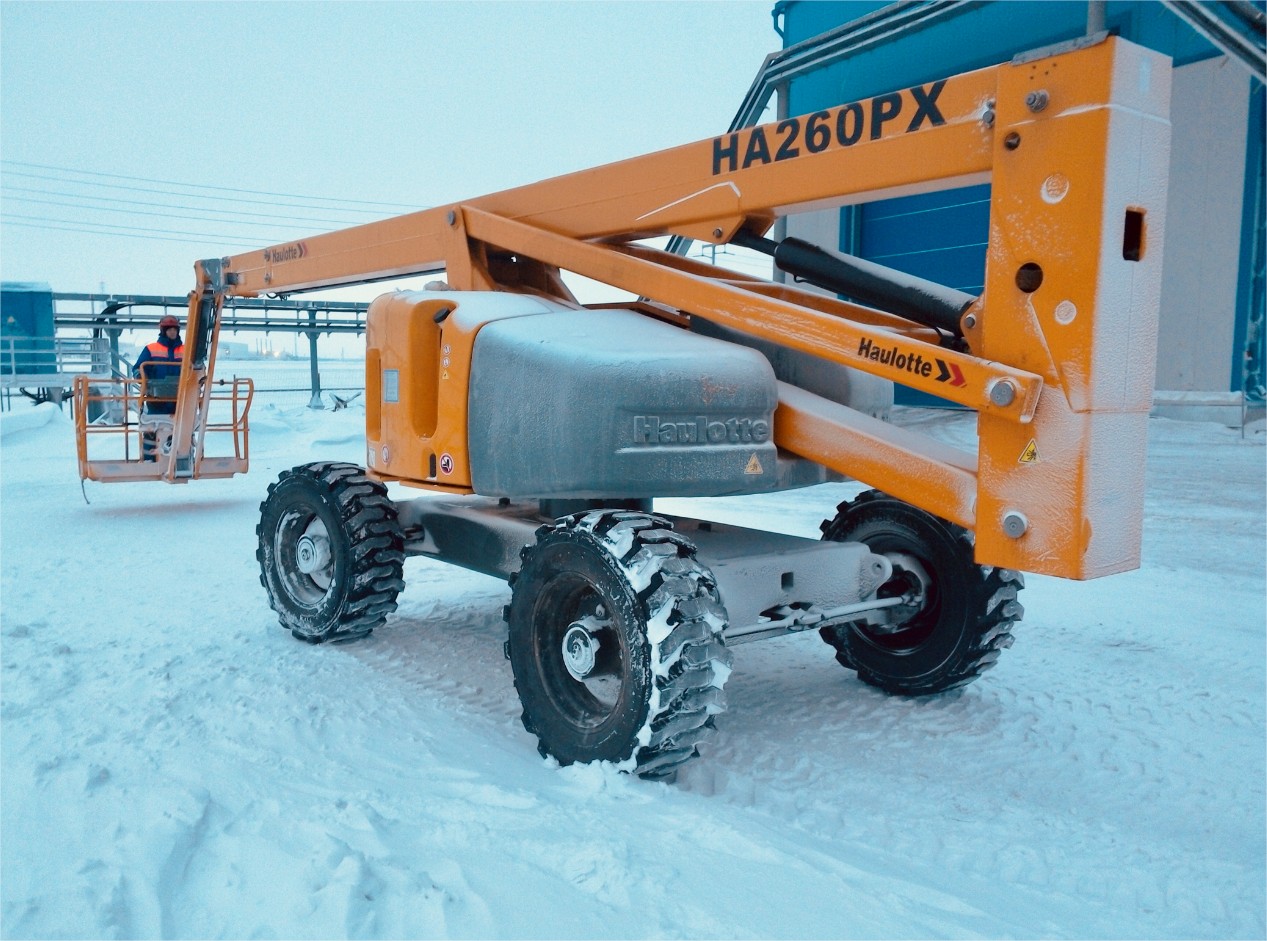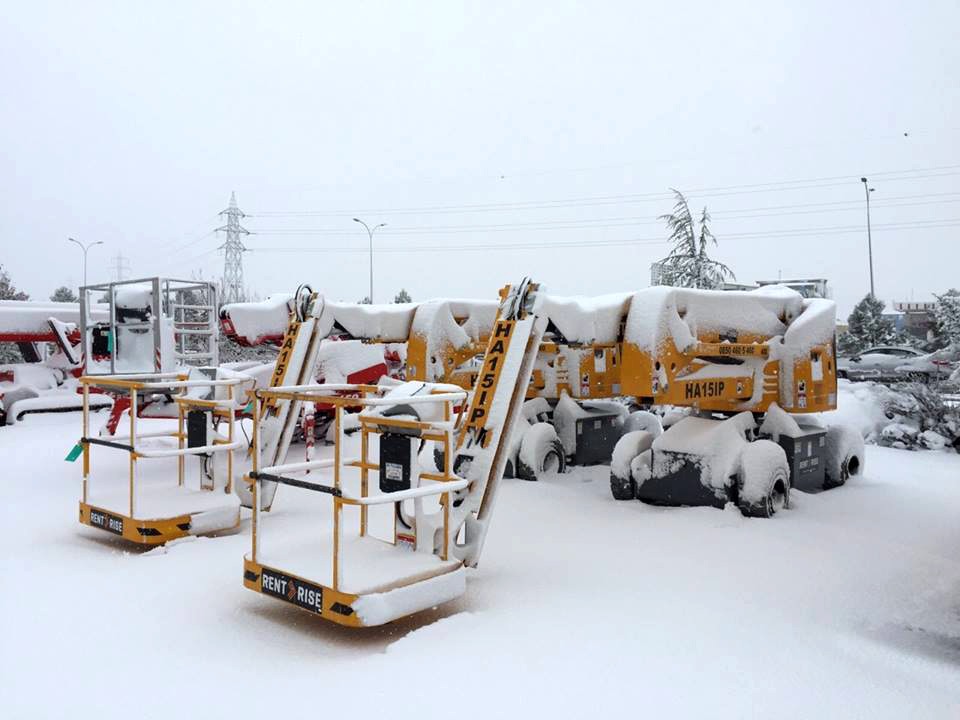When the outside temperature falls below 5°C (41°F), prolonged exposure to cold can lead to several risks, the most dangerous must be hypothermia. Hypothermia is characterized by a body temperature that drops below 35°C (95°F). With prolonged exposure to cold, which can be exacerbated by wind and wet environment, the internal body temperature will drop and the body may not be able to self-regulate its temperature. Hypothermia occurs when heat loss exceeds heat production.

Working in cold climatic conditions can lead to other pathologies such as frostbite and musculoskeletal disorders, which in turn can lead to work-related accidents.
Indeed, the numbness of the limbs due to the cold leads to a loss of dexterity and can result in poor handling, injuries or falls.
A safety harness worn correctly and well attached to an anchor point, is the safest way to protect the operator from a fall.
Hypothermia: warning signs
The main signs of hypothermia are: shivering, severe fatigue, confusion, disorientation, very cold skin and occasionally loss of consciousness. Some of these symptoms are quite common and may not be taken seriously. However, in most cases, emergency hospitalization is absolutely necessary.
As soon as the symptoms are observed and hypothermia is suspected, it is important to act as quickly as possible. The first reaction should be to alert the emergency services so that the worker can be taken to a hospital as soon as possible.
INRS (Institut National de Recherche et de Sécurité) has determined risk levels according to the temperature felt (Wind Chill index), the classification has 4 levels:
Danger levels of cold exposure:
Low risk
Little danger for exposure to the cold of less than one hour with dry skin. Low risk of frostbite. Discomfort.
Risk of hypothermia for long exposures without adequate protection.
Moderate risk
Increasing risk for equivalent temperatures between -25°C (-13°F) and -40°C (-40°F).
Exposed skin can freeze in 10 to 30 minutes. Watch out for numbness or whitening of the face and extremities.
Risk of hypothermia for long-term exposures without adequate protection.
High risk
High risk for equivalent temperatures between -40°C (-40 °F) and -55°C (-67°F): severe frostbite possible in less than 10 minutes, watch out for numbness or whitening of the face and extremities.
Serious risk of hypothermia for long-term exposure.
At equivalent temperatures below -55°C (-67°F), exposed skin can freeze in less than 2 minutes.
The outside conditions are very dangerous.
Protect operators
Exposure to cold during work on an aerial work platform can be accentuated by several factors, such as wind and humidity. In the basket of a platform – especially in the highest telescopic and articulated platforms – the operator is very exposed to the winds. The basket does not protect it and the outside work environment, which is generally clear, does not constitute an obstacle to the wind.
To improve the working conditions of operators in the event of extreme cold and avoid hypothermia, it is first necessary to assess the risks associated with prolonged exposure to cold:
- Can the intervention be spread over several days to decrease the exposure time?
- Can the work be done indoors instead of outdoors?
If these options are not possible, other actions can be put in place such as:
- More frequent and longer breaks, in a suitably heated, dry break area with hot drinks. It will allow operators to warm up between two interventions.
- Rotating positions can be a great option, you must respect the permits and authorizations necessary to operate the MEWP, of course.
Avoiding too much physical effort and hydrating frequently allow the body to manage a low temperature better and help it produce enough heat.
The equipment offered to operators can also be improved. There are clothes and PPE suitable for work in cold weather: technical underwear, intermediate fleeces, waterproof jackets. The head, feet and hands must be suitably protected.
Warm clothes are preferable, without forgetting a protection against humidity which is the main factor reinforcing the feeling of cold.
Finally, prevention is essential: train operators to the risks of hypothermia, they know good practices to ensure their safety and comfort.
Precautionary and anticipatory measures will make it possible to react better if a case of hypothermia occurs: have a portable means of communication in the immediate proximity of the operators, do not let operators work alone without colleagues nearby.
4 key points to avoid hypothermia:
- Get enough hydration
- Wear clothes adapted to the temperatures and weather conditions
- Avoid excessive physical exertion
- Take shelter in a dry and hot space when it’s possible

How to react in case of hypothermia?
Firstly, if the operator is still on the platform, he should be lowered from it, if he can no longer use the controls correctly, the lower console and its control can be used for this purpose.
At the same time, it is imperative to notify the emergency services as soon as possible. If the victim is able to move around, it is beneficial to take him to a warm place while waiting for help.
If the victim is wearing wet clothes, they should be removed and dried.
While waiting for help and depending on the state of the victim, a hot drink may be offered to him, if blankets are available nearby they can be placed on the victim, making sure to cover the head, groin, armpits and ends.

Prevent musculoskeletal disorders
MSDs are one of the most common work-related injuries...

I. Tips for working in winter conditions
Working at heights on a lifting equipment in sub-zero temperatures...

II. Tips for working in winter conditions
Work doesn’t stop just because temperatures drop...